The Things Conference 2025: LoRa® Ecosystem Steals the Spotlight
The Things Conference 2025, held in Amsterdam, attracted over 2,000 participants, featured 180 speakers and 250 presentations, making it a significant event in the IoT calendar. Semtech was notably prominent, reflecting its leadership in the LoRa® ecosystem. The conference highlighted the growing global adoption of LoRa technology, with Semtech's advancements in LoRa Plus™ and 4th-generation devices underscoring its commitment to innovation and scalability in Internet of Things (IoT) solutions. The event served as a platform for industry leaders to discuss the future of IoT connectivity, emphasizing the role of LoRa in enabling the multiple verticals relying on IoT to enhance operational efficiencies and sustainability.
Alongside Semtech, more than 30 key ecosystem partners and innovators also participated in The Things Conference, showcasing the collective strength and diversity of the global LoRa ecosystem.
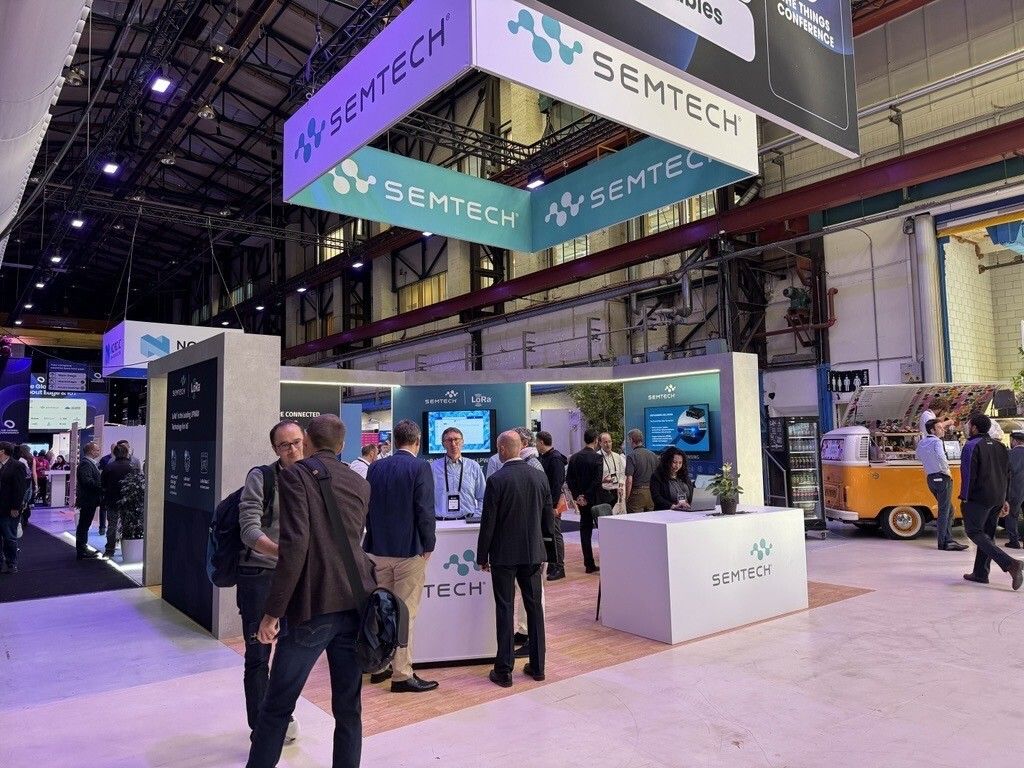 Semtech booth at The Things Conference 2025
Semtech booth at The Things Conference 2025
Developer to Semiconductor CEO
At the Things Conference, Dr. Hong Q Hou, president and CEO of Semtech, shared insights into the company’s journey and its continued commitment to innovation. Reflecting on his 15 months as CEO, Hou highlighted Semtech’s strengthened financial performance and operational excellence, which have enabled renewed investment in core technologies such as LoRa. He announced a 20% increase in R&D spending, driving the development of LoRa Plus and 5th-generation LoRa devices that deliver higher efficiency, lower power consumption and broader RF protocol support. Hou emphasized the importance of aligning technological passion with real-world market needs, positioning LoRa as a cornerstone of global IoT connectivity.
Hou also outlined Semtech’s focus on expanding LoRa’s capabilities for emerging IoT applications. The introduction of dual-band and LoRa Plus devices enables connectivity for more devices and supports edge intelligence, allowing data to be processed closer to its source. These innovations aim to make LoRa adaptable for large-scale implementations across smart cities, utilities, logistics, and industrial monitoring. The company is fostering ecosystem collaboration, ensuring partners and developers have the support to innovate efficiently. Hou concluded that LoRa is entering a new era defined by sustainability, intelligence and interoperability in IoT networks.
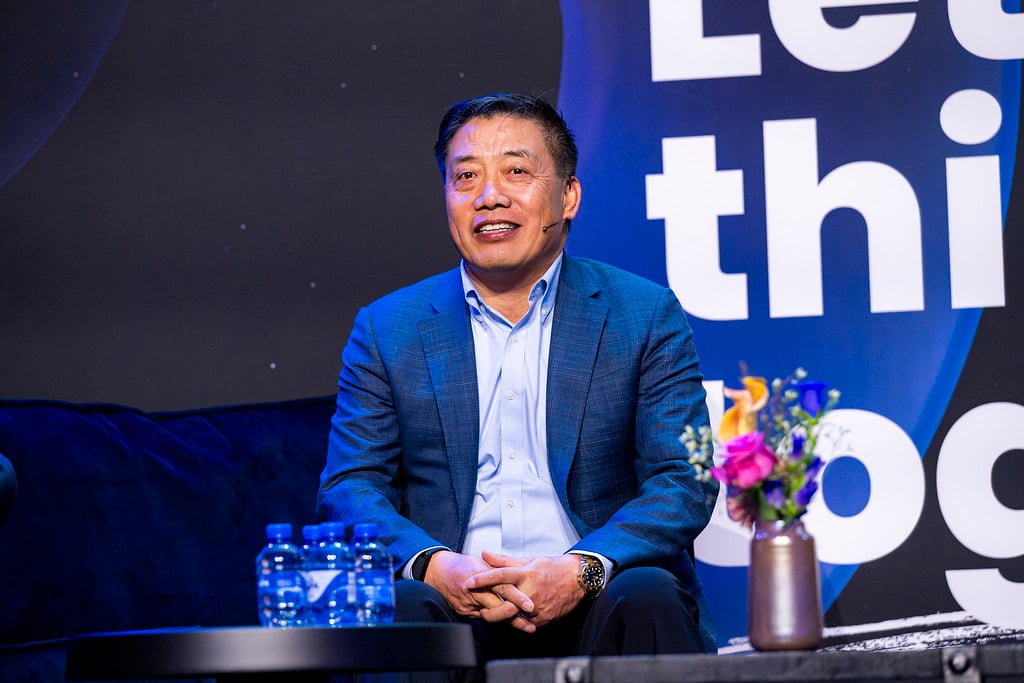 Dr. Hong Q. Hou in conversation with Wienke Giezeman, CEO & founder of The Things Industries
Dr. Hong Q. Hou in conversation with Wienke Giezeman, CEO & founder of The Things Industries
The Vision of LoRa Market
Robert Comanescu, vice president of marketing & applications for Semtech's Wireless ICs, outlined a detailed view of LoRa’s accelerating global expansion and its strengthening role within the IoT ecosystem.
China has re-emerged as a major growth engine, with ecosystem players increasingly returning to LoRa after several years of prioritizing NB-IoT. The shift is driven by LoRa’s open ecosystem, flexibility and cost efficiency. LoRa’s strength in industrial automation, smart city infrastructure and environmental monitoring is driving broad-scale deployments powering the next wave of industrial digitalization.
In India, Comanescu highlighted rising adoption of LoRa networks now powering intelligent street lighting, water metering and renewable energy projects supporting the government’s smart cities mission and energy conservation goals. The low power consumption and long-range capability of LoRa allows operators to manage vast, distributed assets cost-effectively, without dependence on cellular networks.
Meanwhile, in the Middle East, governments are rapidly investing in smart city frameworks, oilfield automation and worker safety systems. LoRa enables private, secure and scalable IoT networks across harsh industrial and remote environments. Its ability to sustain connectivity over long distances makes it especially suitable for worker protection, predictive maintenance and critical infrastructure monitoring in challenging terrains.
Turning to Europe, Comanescu emphasized the region’s strategic transition from pilot-scale IoT initiatives to city-wide LoRaWAN® infrastructure deployments. Municipalities across France, Germany and the Netherlands are adopting LoRa-based networks for multi-service urban management from smart metering, street lighting, and parking to waste collection and environmental sensing, all operating on a unified platform. The focus is shifting from individual applications to shared IoT ecosystems, enabling cities to extend network capabilities across departments without duplicating investments.
In the Americas, LoRa continues to expand through asset tracking, fleet logistics and smart utilities, underscoring its adaptability across diverse verticals. Comanescu concluded by highlighting Semtech’s continued innovation — introducing LoRa Plus and fourth-generation LoRa chipsets that enhance energy efficiency, network capacity and multi-protocol interoperability. These advancements reaffirm Semtech’s mission to empower industries and governments worldwide to build smarter, more resilient and sustainable IoT solutions.
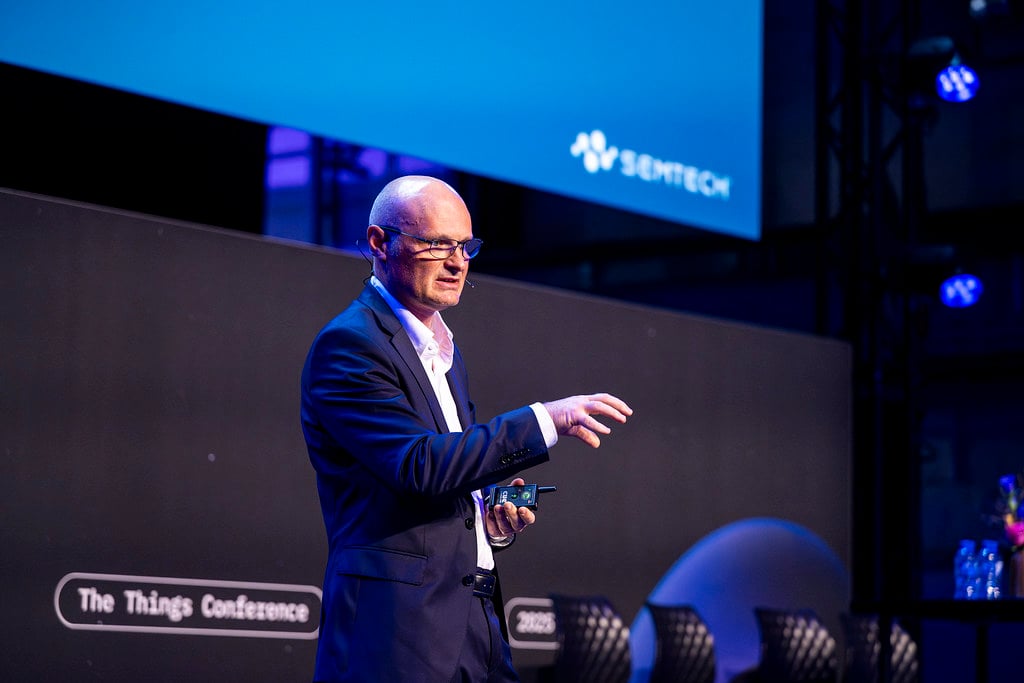 Robert Comanescu talking about LoRa market traction across different regions
Robert Comanescu talking about LoRa market traction across different regions
The Swiss Army Knife of IoT: How LoRa Plus Enables Tomorrow's Artificial Intelligence (AI) Applications
At the Conference, Shahar Feldman, head of product marketing for Semtech’s Wireless IC Product Line, presented on LoRa Plus, calling it the “Swiss Army knife of IoT” for enabling AI applications at the edge. He outlined the growth opportunities for edge AI across smart manufacturing, smart cities, commercial applications, and agriculture, emphasizing that modern AI applications require richer, bidirectional data than traditional IoT sensors could provide. LoRa Plus addresses this connectivity gap by combining long range, low power and higher data rates, providing flexibility for diverse AI workloads while maintaining efficient energy use. It builds on Semtech’s proven LoRa portfolio, joining 450 million deployed units, and extends capabilities with multi-physical layer support, enhanced RF performance and flexible integration for a variety of OEM needs.
Feldman also detailed the technical innovations of LoRa Plus, including its multiband transceiver supporting sub-GHz and 2.4 GHz ISM frequencies, high data rates up to 2.6 Mbps with Fast Long Range Communication (FLRC) and compatibility with multiple wireless protocols such as LoRaWAN, Zigbee, Z-Wave, Wi-SUN, wM-Bus, and multiple mesh solutions. He highlighted improvements in range, energy efficiency and cost-effectiveness, enabled by a single reference design without the need for RF switches or big thermal dissipators. LoRa Plus supports legacy devices, mesh-to-star bridging, AI processing at the edge, and precise point-to-point applications, making it a versatile solution for both large-scale deployments and specialized use cases. Feldman concluded by inviting attendees to explore live demos, request samples and participate in upcoming workshops to experience the platform’s capabilities firsthand.
Learn more about LoRa Plus on YouTube: How LoRa Plus™ Enables Tomorrow's AI Applications | Shahar Feldman | Semtech - YouTube
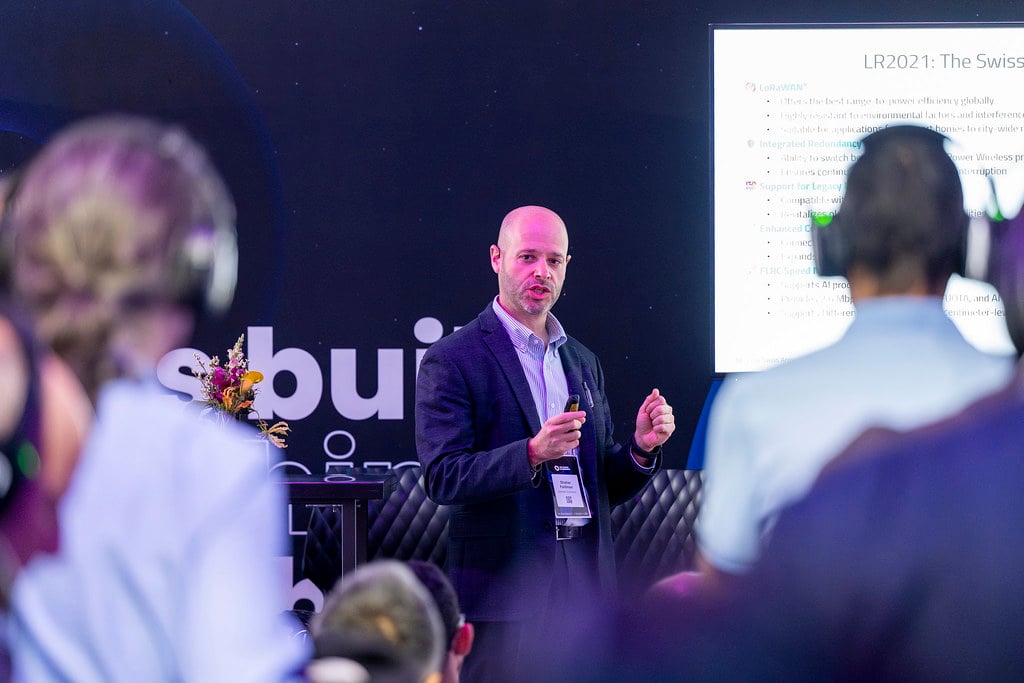 Shahar Feldman, Head of Product Marketing, Wireless Products at Semtech presenting LoRa Plus
Shahar Feldman, Head of Product Marketing, Wireless Products at Semtech presenting LoRa Plus
Working with Regulators – a Sub-GHz Panel Discussion
The "Sub-GHz Panel Discussion", moderated by Olivier Beaujard, senior director LoRa Alliance at Semtech and chair of the board of the LoRa Alliance®, highlighted the critical importance of unlicensed spectrum for global IoT innovation. Joining Olivier were Phil Beecher, president and CEO of the Wi-SUN Alliance; Navod Suraweera, principal communications systems engineer at Morse Micro (Wi-Fi HaLow); Avi Rosenthal, CEO of the Z-Wave Alliance; and Joe Preishuber-Pfluegl, head of regulatory affairs at the RAIN RFID Alliance. The discussion focused on the FCC’s proposed reallocation of the 902–928 MHz spectrum and the potential impact on billions of deployed IoT devices, including smart meters, industrial sensors, home automation systems, and other critical networks.
Panelists shared insights from their respective technology domains, emphasizing the spectrum’s central role in enabling low-power, long-range connectivity across diverse applications. Beecher highlighted Wi-SUN networks’ role in smart grids and utility monitoring, while Rosenthal underscored Z-Wave’s contribution to secure, scalable smart home deployments. Preishuber-Pfluegl reflected on the decades-long coexistence of RFID systems that ship billions of tags globally, illustrating the ecosystem’s maturity and vulnerability to regulatory disruption. Suraweera added that Wi-Fi HaLow is accelerating industrial IoT and imaging applications, further demonstrating how shared sub-GHz spectrum fuels innovation across sectors.
A key takeaway from the panel was the unprecedented collaboration among these previously competing technology alliances, now united to advocate for stable, predictable spectrum management. Beaujard emphasized that the alliances’ unified engagement with the Federal Communications Commission (FCC) aims to preserve coexistence frameworks that have enabled decades of innovation. This joint effort underscores the critical importance of cooperative advocacy and regulatory clarity, ensuring that IoT ecosystems continue to thrive, billions of devices remain connected and global IoT growth can proceed without disruption.
Beaujard also highlighted the positive growth momentum across the IoT market, emphasizing how innovations like AI-enabled sensors are opening new possibilities. He noted the evolving role of LoRaWAN as a device control panel with practical examples showcasing the network’s versatility. The conference also served as a crucial ecosystem meeting point, bringing together technology leaders, developers and industry alliances to collaborate and share insights.
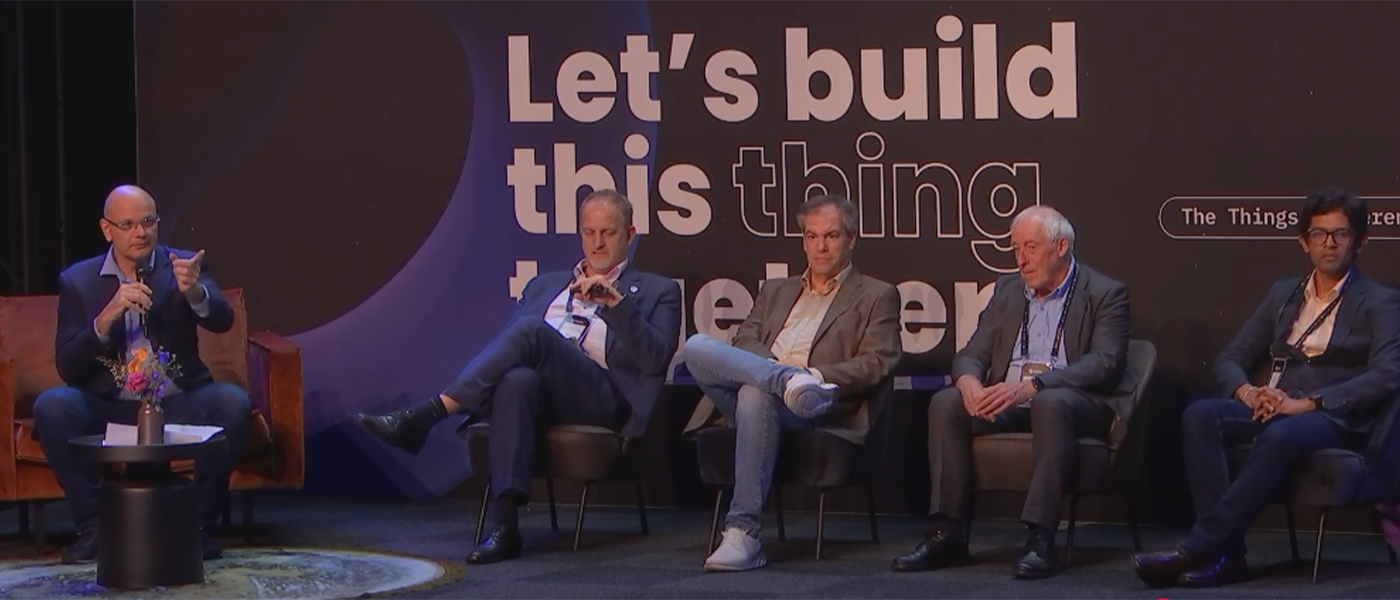
Olivier Beaujard (on the extreme left) moderating the Sub-GHz panel
The Future is Connected: Women Shaping IoT's Next Decade
“The Future is Connected: Women Shaping IoT's Next Decade”, moderated by Carlo Tinella, director of marketing LoRa ICs & product management at Semtech, brought together leading women driving innovation across IoT, AI, and connected technologies. Tinella highlighted the need for diverse perspectives in the industry, recognizing that women bring unique pragmatism and vision to the IoT ecosystem. The panelists: Violet Su, business development manager at Seeed Studio; Catherine Caruana-McManus, co-founder & director at Meshed; Abi Ghali, co-founder of Women in IoT and enterprise account executive at Edge Impulse; and Michelle Lozada, vice president of corporate marketing at Semtech shared their insights on the transformative potential of IoT over the next decade and the role of women in shaping its future.
The discussion spanned several key themes including sustainability, health technology, and interoperability. Lozada emphasized IoT's potential to make sustainability "not just a goal, but an inevitable outcome," drawing from personal experiences with climate challenges in California. She also compared diversity to an orchestra, highlighting how multiple perspectives create richer, more comprehensive technological solutions. The discussion went beyond gender, exploring diversity across accessibility, culture and thought. Su pointed to the combination of AI and IoT as making technology more accessible, particularly in remote areas, and underscored the importance of positivity and inclusivity in leadership. Caruana-McManus and the other panelists stressed that increasing diversity across gender, culture, and experience directly improves innovation, reduces bias, and results in better, more inclusive products. They noted that diverse teams foster collaboration, creativity and richer solutions, from product development to sales, ultimately shaping an IoT ecosystem that is more human-centered and impactful.
A central theme emerged of transforming complex technical solutions into relatable, human-centered narratives that connect technological innovation to broader societal benefits. The panel underscored a critical message: IoT is not just about connecting devices, but more about amplifying human control on social activities and environment, and addressing global societal challenges through innovative, inclusive technological approaches.
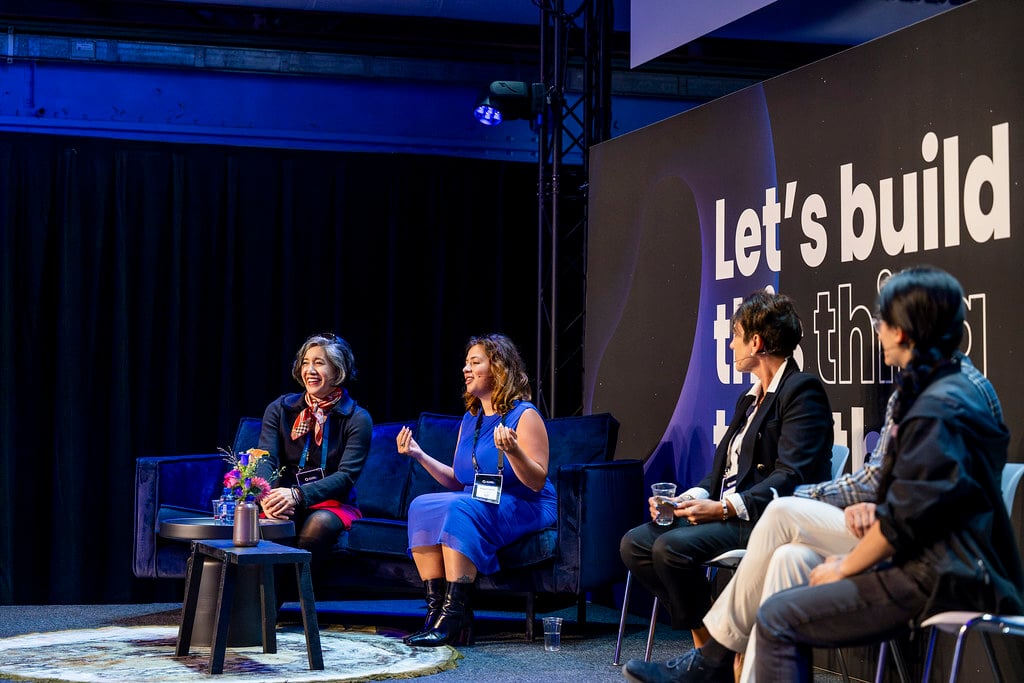 Michelle Lozada (left)
Michelle Lozada (left)
Inside the Semtech LoRaWAN End-Device Stack
Davide Orifamma, electronic and firmware design director at Semtech with extensive experience into delivering silicon to system solutions, provided an in-depth overview of the Semtech LoRaWAN End-Device Stack LoRa Basics™ Modem and the engineering behind it. Leading the LoRa system team for over a decade, Orifiamma highlighted three core principles driving development: a multi-dimensional software stack, rigorous focus on radio performance and flexibility for future protocol expansions. The stack supports all LoRaWAN classes, regions, and features including relays and multicast, and comes in two versions: an open-source implementation running on external memory and an embedded version integrated within LR1121 chips. Both are designed to deliver high performance while offering developers easy access through well-defined APIs. Orifiamma emphasized the extensive validation behind the stack, with over 10,000 tests per release to ensure reliability and minimize risk for end-device developers.
A key focus of the LoRa Basics Modem Stack is power efficiency and radio optimization. Orifiamma explained how the team carefully calibrates transmission and reception timing, optimizes sleep cycles, and tracks crystal variations to minimize energy consumption per packet. Sensitivity, transmit power accuracy, and regulatory compliance are all tested across regions including Europe, US, China, India, and Japan. Looking ahead, Semtech is applying the same principles to enable coexistence with other protocols, creating a unified software platform that extends LoRaWAN’s performance benefits to broader IoT scenarios. Demonstrations showcased how LoRaWAN packets can seamlessly operate alongside other protocol traffic, highlighting the stack’s robust, power-aware, and timing-optimized design—underscoring Semtech’s commitment to empowering reliable, high-performance end devices for the IoT ecosystem.
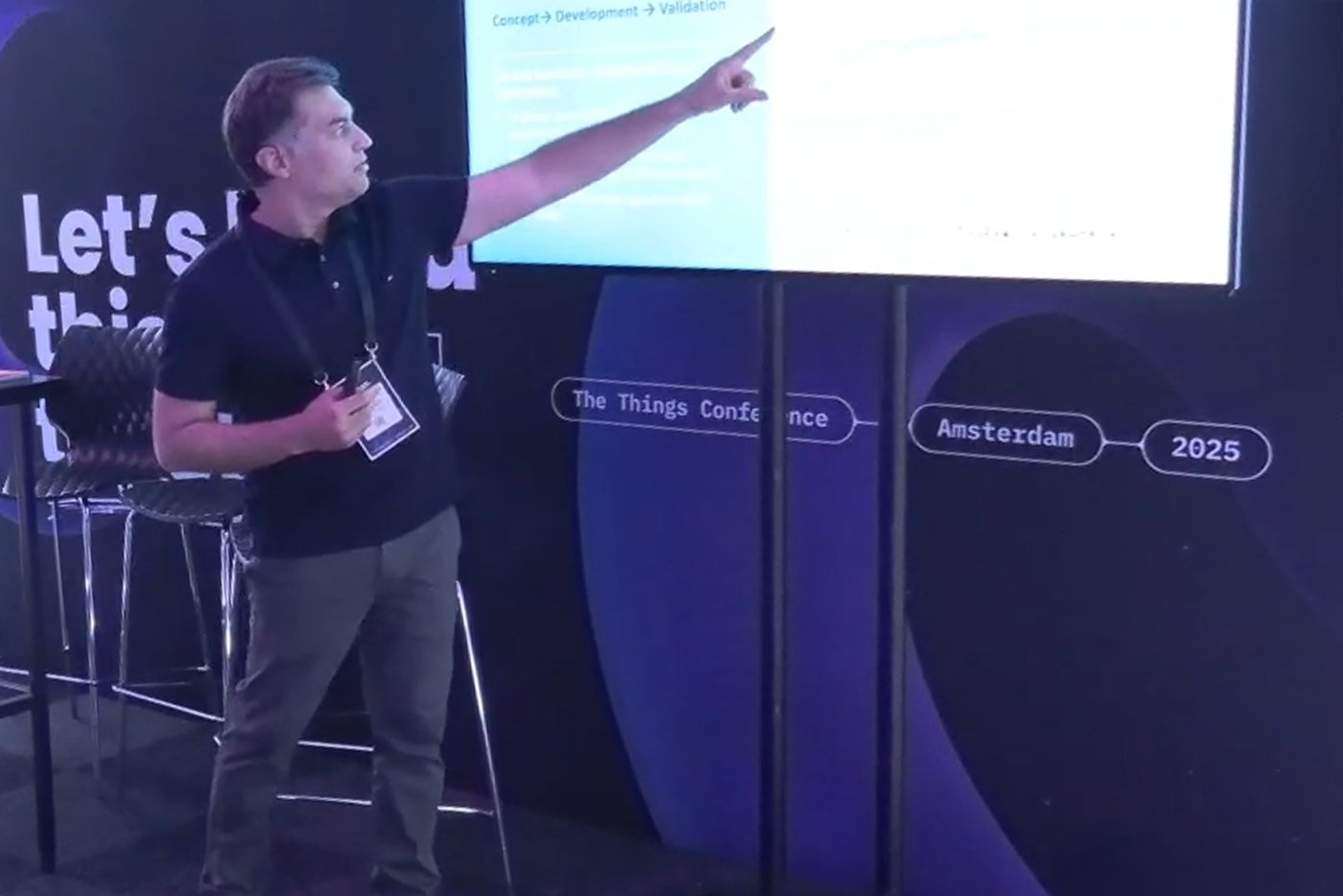
Davide Orifiamma presenting the LoRaWAN stack
LoRaWAN & Water Utilities: Building Long-Term Partnerships for Success
At the panel discussion on “LoRaWAN & Water Utility: How to Select a Long-Term Partner,” industry experts explored the critical aspects of deploying LoRaWAN networks in water utilities and the importance of sustainable partnerships. Moderated by Satyajit Sinha, Principal Analyst at IoT Analytics, the session featured insights from Ralph Varcoe (Connexin), Rashid Alahmedi (InfraX), Christoph Wergen (Wien Energie), and Carlo Tinella (Semtech).
The panel emphasized that water utilities operate on long lifecycles, often 10 to 25 years, and technology partners must align with these prerequisites. Tinella highlighted Semtech’s commitment to long-term support, noting that LoRa chips introduced over a decade ago remain available, providing utilities with a reliable, proven technology base. Similarly, Alahmedi shared InfraX’s approach in Dubai, stressing the importance of selecting partners with both domain expertise and field experience to ensure sustainable infrastructure deployment.
Panelists also discussed key metrics for vendor selection. Reliability, first-time connection success, supply chain stability, and the partner’s commitment to co-developing value-added services were cited as critical factors. Ralph Varcoe highlighted the complexity of UK water networks, where meters are often underground, requiring dense network coverage and an end-to-end service model that includes meters, gateways and data management systems. Christoph Wergen added that flexible, modular network design enables multi-department city-scale deployments, allowing utilities to reuse infrastructure for multiple applications without compromising interoperability.
The discussion also explored the debate between single-vendor versus multi-vendor ecosystems. While LoRaWAN benefits from a broad ecosystem driving innovation, the consensus was that utilities prefer a trusted service provider who can integrate the best solutions across hardware, connectivity and software layers, providing a seamless, manageable end-to-end service. As the panel concluded, long-term success in smart water metering relies on partnerships that combine technical excellence, strategic vision and a shared commitment to delivering reliable data and sustainable operations.
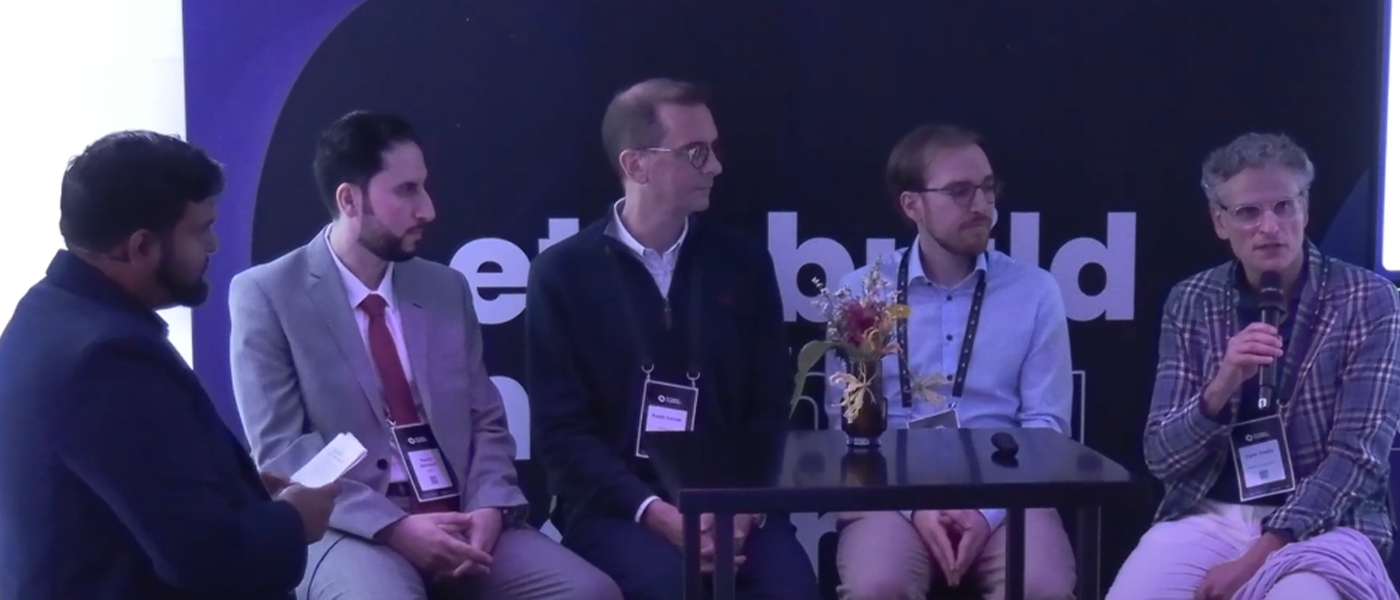
LoRaWAN and Water Utility Session Panelists eagerly listening to Carlo Tinella, Semtech
Explore Semtech's full range of LoRa products, Case Studies and other resources here. Subscribe to the LoRa Monthly Newsletter for latest advancements in LoRa.
Semtech®, LoRa®, LoRa Plus™, LoRa Basics™ , LoRaWAN® and the Semtech logo, are registered trademarks or service marks of Semtech Corporation or its affiliates. Other product or service names mentioned herein may be the trademarks of their respective owners.
